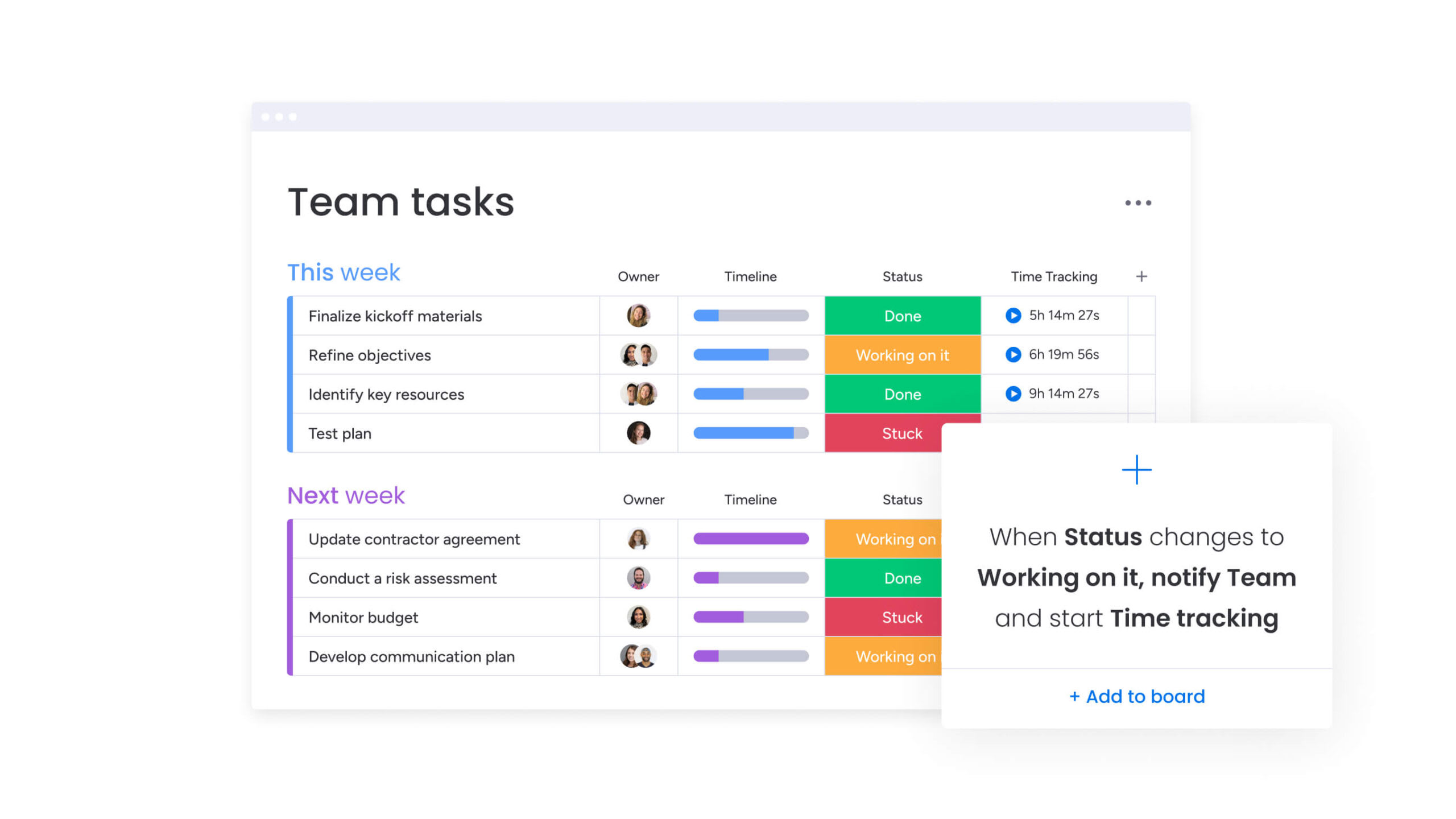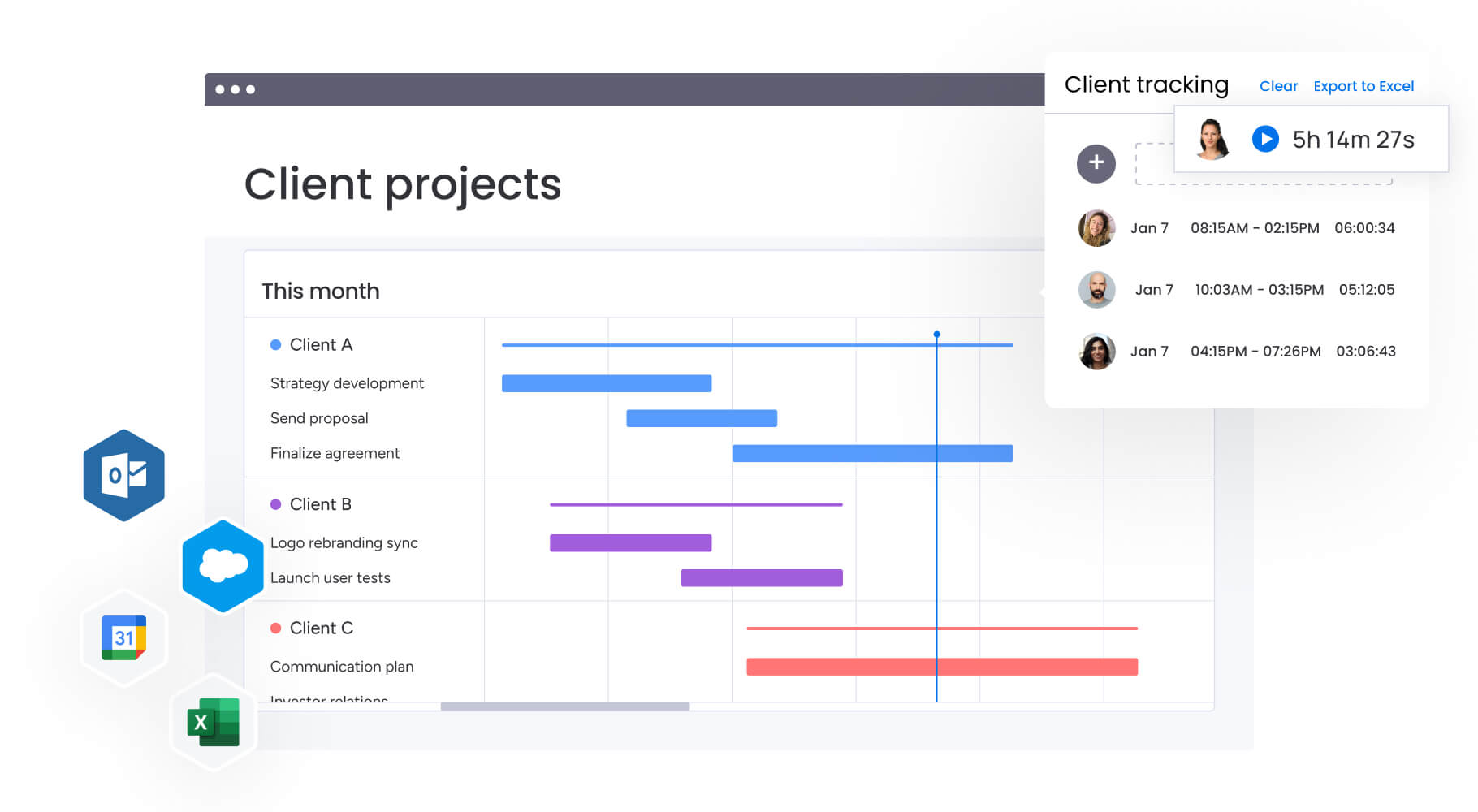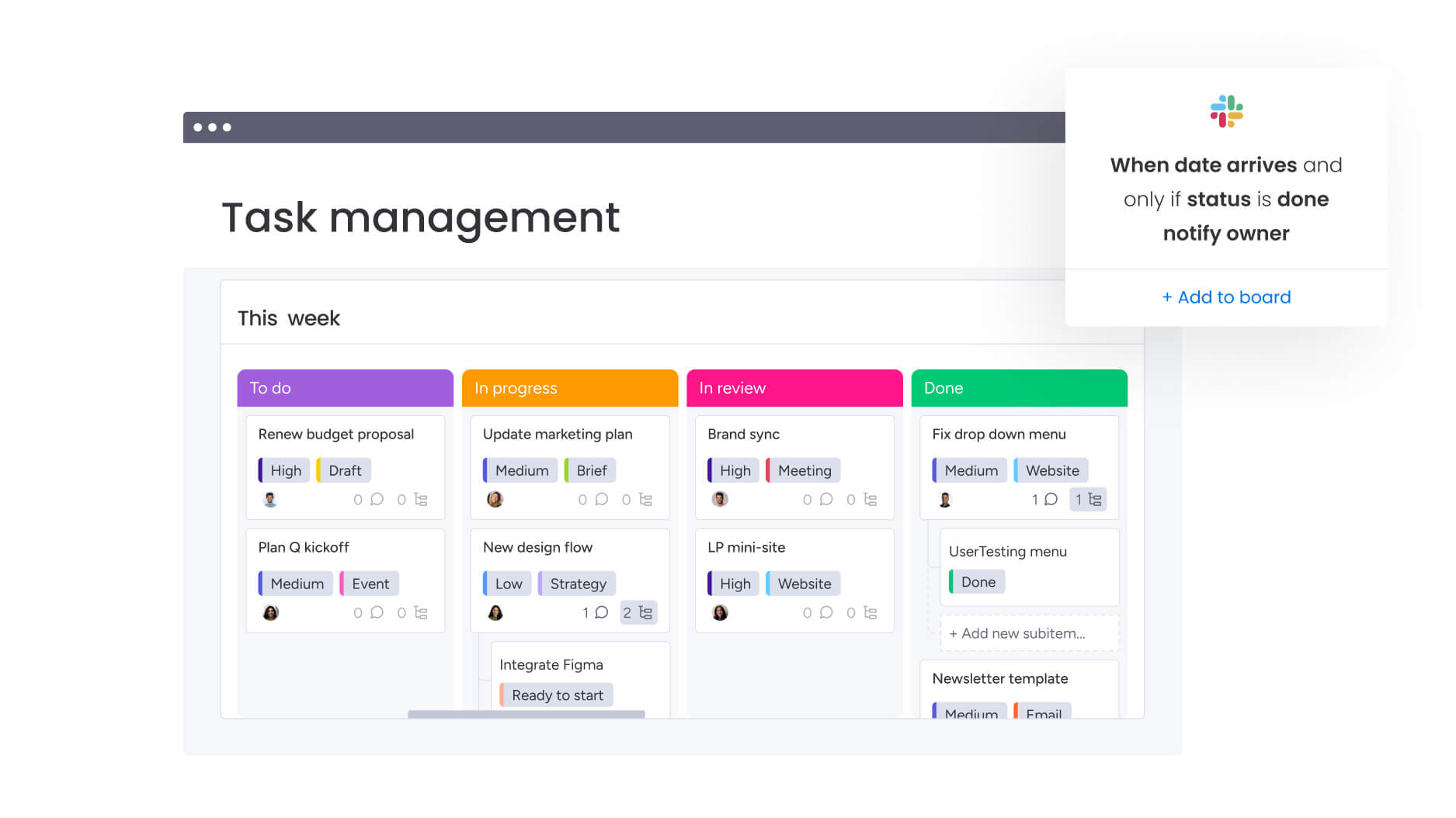Every great project starts with a great team — but even the best teams can struggle if their workflows aren’t running smoothly. As a manager, you know how easily bottlenecks, duplicated work, or unclear ownership can slow things down. The question is, how do you uncover what’s really happening in your team’s day-to-day work?
That’s where task analysis comes in. It’s a simple but powerful way to examine how tasks are actually performed so you can spot inefficiencies, understand individual strengths, and refine the way your team collaborates. With clearer insight into each step of your process, you can streamline work, reduce errors, and help your team deliver stronger results.
In this detailed guide, we’ll look at how task analysis works in project management and how you can use it to build a more efficient, high-performing team.
Key takeaways
-
Understand your workflows: task analysis helps you break down how work gets done so you can identify inefficiencies and improvement opportunities.
-
Build stronger teams: use insights from task analysis to match skills, balance workloads, and create better collaboration across roles.
-
Reduce errors and delays: spotting roadblocks early allows you to streamline processes and keep projects on track.
-
Make data-driven improvements: track patterns in how tasks are completed to refine procedures and optimize performance over time.
-
Apply insights with monday work management: visualize processes, automate tasks, and track progress in one shared workspace to turn analysis into real results.
What is task analysis?
Task analysis is the process of studying how work gets done. It helps project managers understand how individual team members approach their tasks, the methods they use, and where there may be opportunities to improve efficiency.
The goal is to gain a detailed picture of how people perform their work by observing and analyzing factors such as:
-
How tasks are completed: the exact steps a person takes to achieve their goal.
-
Problem-solving approaches: how individuals plan, make decisions, and overcome challenges.
-
Skills and experience: what each team member contributes to the process.
-
Working conditions: how different environments affect performance or focus.
-
Mindset and engagement: the attitudes, thoughts, or emotions that influence how work gets done.
Conducting a task analysis gives you a clear understanding of your team’s real workflows — not just what’s written in a process document. These insights make it easier to optimize individual performance, refine collaboration, and strengthen the team as a whole.
Key benefits of task analysis in project management
Understanding how your team works is the first step to improving performance. A well-executed task analysis helps project managers uncover hidden inefficiencies, strengthen collaboration, and improve resource management to set teams up for consistent success.
Here are some of the most important advantages:
-
Simplify complex work: breaking tasks into smaller steps helps teams manage challenging projects more confidently.
-
Spot and prevent mistakes: analyzing workflows early reveals potential issues before they grow into costly delays.
-
Improve processes over time: use findings to refine procedures, build best practices, and guide future project planning.
-
Boost team confidence: clear roles and structured workflows make team members feel more capable and supported.
-
Enhance collaboration: understanding how everyone contributes encourages better communication, balanced workloads, and effective resource management.
By using task analysis consistently, project managers can create smarter, more efficient teams that deliver results with less stress and fewer surprises.

Common types of task analysis in project management
While there are many ways to perform task analysis, two methods are especially valuable in project management. Understanding these approaches helps you choose the right one for your team’s goals and the type of work you’re analyzing.
Hierarchical task analysis (HTA)
Hierarchical task analysis breaks a larger goal into smaller, structured components — sub-goals, operations, and specific actions. It creates a visual map of every step needed to reach an objective, making it easier to spot inefficiencies and improve consistency across projects.
HTA is especially useful for:
-
Creating standard operating procedures (SOPs): ensures that every team member follows the same sequence of actions.
-
Designing training materials: helps new employees understand workflows from start to finish.
-
Improving clarity: shows how individual tasks contribute to the larger project goal.
By breaking tasks into clear layers, HTA helps project managers visualize dependencies and design workflows that are easier to follow and optimize.
Cognitive task analysis (CTA)
Cognitive task analysis focuses on the mental side of work — how people make decisions, solve problems, and apply their expertise. It’s ideal for complex or high-stakes roles where reasoning and judgment play a major role in task success.
CTA is most helpful when you want to:
-
Understand expert decision-making: capture how experienced employees approach challenges.
-
Identify skill gaps: see where additional support, training, or automation could improve outcomes.
-
Refine processes: translate cognitive steps into clearer guidance or smarter workflows.
In short, cognitive task analysis helps you understand not just what team members do, but how they think — a key factor in improving collaboration, knowledge sharing, and performance across your projects.
Other task analysis methods to know
Beyond HTA and CTA, a few other methods can provide valuable insights depending on your project needs:
-
Performance analysis: focuses on how efficiently tasks are completed, helping teams streamline effort and reduce redundancy.
-
Content analysis: reviews the information and tools needed for success, ensuring clarity in documentation and instructions.
-
Activity analysis: looks at how tasks connect across a workflow, making it easier to spot dependencies and improve coordination.
Choosing the right type of task analysis gives project managers a complete picture of how work happens — and where there’s room to make it smoother, faster, and more effective.
How to conduct a task analysis: 5 simple steps
A successful task analysis follows a clear, structured process. By breaking it down into these five steps, you can gather the insights needed to drive real improvements in your team’s workflow optimization.
Step 1: identify the primary task and define success
First, figure out which task you want to analyze and what your purpose is. Are you trying to reduce errors, speed up the process, or prepare for automation? Define what a successful outcome looks like so you have a clear benchmark for your analysis.
Step 2: break the task down into subtasks and actions
Once you’ve identified your primary goal, break down the main task into smaller subtasks. This process, known as process mapping or task decomposition, should capture every action the user takes. Generally, breaking a large task into six to eight core subtasks provides a good level of detail without becoming overwhelming.
Step 3: observe and document the current process
Now it’s time to gather data. Observe a team member performing the task and take detailed notes. Document how challenging each subtask is, the tools they use, and how long each step takes. The goal is to create a complete picture of the current workflow, including both physical and cognitive actions.
Step 4: analyze the data to identify inefficiencies
After the observation, review your notes to identify bottlenecks, redundant steps, or areas of confusion. Compare your findings against your definition of success from Step 1. If you’ve analyzed multiple team members, compare the results to see where you could standardize the workflow, increase productivity, and improve collaboration.
Step 5: design and implement the optimized workflow
Finally, use your analysis to design a new, improved workflow. Share your findings and proposed changes with the team to get their input and ensure the new plan is feasible. Once you reach a consensus, implement the new process and monitor its performance to ensure it delivers the desired results.

Real-world examples of task analysis in project management
Task analysis can be applied to almost any stage of a project, from assembling a new team to optimizing an existing workflow. The following examples show how project managers can use different types of task analysis to make smarter decisions, reduce inefficiencies, and improve team performance.
Example 1: using hierarchical task analysis to build a new project team
A project manager at a marketing agency is forming a team for a new product launch. Before assigning roles, they use hierarchical task analysis (HTA) to break the campaign into key objectives — from strategy planning to creative production and reporting.
Through this process, the manager:
-
Identifies the subtasks within each phase.
-
Maps required skills and time needed for completion.
-
Spots overlaps between roles and gaps in expertise.
Armed with these insights, they assemble a balanced team with the right mix of experience and availability. Clear workflows are defined upfront, ensuring everyone understands how their work connects to the larger goal. The result is a smoother launch with fewer communication issues and stronger accountability.
Example 2: applying cognitive task analysis to fix workflow delays
In another case, a software development project is falling behind schedule. The project manager suspects decision-making bottlenecks are slowing progress, so they conduct a cognitive task analysis (CTA) to understand how team members approach complex tasks such as debugging and sprint planning.
The manager observes that:
-
Team members rely on different approval paths for similar tasks.
-
Documentation is inconsistent and causes confusion.
-
Critical decisions often stall due to unclear ownership.
Using these findings, they redesign the workflow to clarify roles, automate approvals, and streamline documentation. The outcome is faster sprint cycles, fewer delays, and stronger alignment between developers, QA, and product managers.
Example 3: combining methods to improve cross-team collaboration
A project manager overseeing design, operations, and marketing teams uses both HTA and CTA to improve collaboration. The hierarchical analysis maps every step of the shared process, while the cognitive analysis examines how each team interprets requirements and communicates progress.
This dual approach helps them:
-
Identify duplicated or misaligned tasks between departments.
-
Clarify how information is shared and decisions are made.
-
Centralize communication in a shared workspace to increase visibility.
The result is a streamlined process where teams work together more efficiently, reducing confusion and improving delivery times.

Turn task analysis insights into action with monday work management
Task analysis can reveal powerful insights — but gathering, organizing, and acting on that information can take time. That’s where monday work management comes in. The platform makes every stage of task analysis faster, clearer, and more collaborative so you can turn insights into action with ease.
Here’s how it helps you streamline task analysis and continuous improvement:
-
Promote real-time collaboration: share task analysis results instantly and keep everyone aligned through transparent communication, shared boards, and centralized updates.
-
Use customizable dashboards: view, compare, and analyze the data that matters most to your project’s success, all in one connected dashboard powered by visual insights and AI summaries.
-
Visualize workflows your way: track performance and progress using Kanban boards for agile task management or Gantt charts for long-term planning and milestone tracking.
-
Automate everyday tasks: save time by automating repetitive work like approvals, status updates, and notifications so your team can focus on higher-value problem-solving.
-
Leverage AI for smarter insights: identify patterns, predict bottlenecks, and get recommendations for optimizing team efficiency and resource allocation.
By combining AI-driven analysis with flexible, visual project tools, monday work management transforms task analysis from a manual process into a continuous feedback loop that drives clarity, collaboration, and better results.
FAQs
What is the main purpose of a task analysis?
The main purpose of a task analysis is to understand how a task is currently performed in order to identify opportunities for improvement. It helps teams streamline processes, reduce errors, improve training, and increase overall efficiency and productivity.
What is the difference between task analysis and workflow analysis?
Task analysis typically focuses on a single task performed by an individual or a small group to understand it in great detail. Workflow analysis takes a broader view, examining how a series of tasks are connected and handed off between different people or teams to complete a larger business process.
What is an example of Hierarchical Task Analysis (HTA)?
An example of HTA is mapping out the process of making a cup of coffee. The main goal is "make coffee." This is broken down into sub-goals like "gather materials," "brew coffee," and "add milk and sugar." Each sub-goal is then broken down into specific actions, such as getting a filter, measuring coffee grounds, and pouring water.
How often should you perform a task analysis for your team?
You should perform a task analysis whenever you introduce a new process, when a team is consistently failing to meet its goals, or when you're looking to make significant improvements to efficiency. It's also a good practice to review critical workflows annually to ensure they remain optimized.
 Get started
Get started


